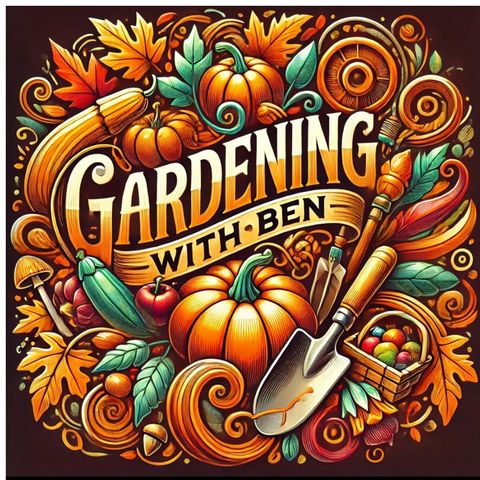"Creating a Thriving Wildlife Garden in Your Allotment and Garden"

Download and listen anywhere
Download your favorite episodes and enjoy them, wherever you are! Sign up or log in now to access offline listening.
Description
Welcome to "Creating a Thriving Wildlife Garden in Your Allotment and Garden," your comprehensive guide to transforming your gardening space into a haven for local wildlife. Encouraging biodiversity in your...
show moreWhy Create a Wildlife Garden?
**1. Environmental Benefits:** A wildlife garden supports local ecosystems by providing habitats and food sources for various species. This helps maintain biodiversity and promotes a healthy balance in the environment. Pollinators like bees and butterflies play a crucial role in plant reproduction, and attracting them to your garden can boost your crop yields.
**2. Natural Pest Control:** Encouraging beneficial insects and predators such as ladybugs, birds, and frogs helps keep pest populations under control. This reduces the need for chemical pesticides and creates a healthier garden environment.
**3. Personal Enjoyment:** A wildlife garden offers endless opportunities for observation and learning. Watching birds, butterflies, and other creatures can be a delightful and educational experience for you and your family.
Designing Your Wildlife Garden
**1. Plant Diversity:** Include a variety of native plants in your garden to attract different species. Native plants are well-adapted to the local climate and soil conditions, making them easier to grow and maintain. They also provide the best food and shelter for local wildlife. Consider planting a mix of flowering plants, shrubs, and trees to create layers of habitat.
**2. Pollinator-Friendly Plants:** Choose plants that provide nectar and pollen for bees, butterflies, and other pollinators. Examples include lavender, coneflowers, and sunflowers. Planting in clusters rather than single specimens makes it easier for pollinators to find and utilize the resources.
**3. Water Features:** A small pond or birdbath can be a valuable addition to your wildlife garden. Water sources attract birds, amphibians, and insects, providing them with a place to drink and bathe. Ensure your water feature has shallow edges to accommodate different species.
Creating Habitats
**1. Nesting Sites:** Provide nesting boxes for birds and bats, and leave some areas of your garden undisturbed for ground-nesting bees and other insects. Dead wood piles and log stacks create habitats for beetles, fungi, and other beneficial organisms.
**2. Shelter:** Dense shrubs, hedges, and rock piles offer shelter and protection for small mammals, birds, and insects. Planting evergreen species ensures year-round cover.
**3. Wildflower Meadows:** Dedicate a section of your allotment or garden to wildflowers. These areas require minimal maintenance and provide a rich habitat for pollinators and other wildlife. Sow a mix of annual and perennial wildflower seeds to enjoy continuous blooms.
Maintaining Your Wildlife Garden
**1. Avoid Pesticides:** Chemical pesticides can harm beneficial insects and other wildlife. Use organic and natural pest control methods instead. Encourage natural predators and use companion planting to manage pests.
**2. Sustainable Practices:** Incorporate sustainable gardening practices such as composting, mulching, and water conservation. These practices improve soil health, reduce waste, and create a more resilient garden ecosystem.
**3. Seasonal Care:** Adjust your gardening practices with the seasons to support wildlife year-round. Leave seed heads and dead plants in place during winter to provide food and shelter. Prune and tidy up in early spring before the growing season begins.
Listener Questions and Success Stories
We love engaging with our listeners! In this episode, we feature your questions about building a wildlife garden and share success stories from fellow gardeners who have created thriving habitats. Whether you need advice on specific plants or want to celebrate your wildlife garden achievements, this segment is all about community and learning from each other.
Conclusion
"Creating a Thriving Wildlife Garden in Your Allotment and Garden" is your go-to resource for fostering biodiversity and enjoying the benefits of a wildlife-friendly garden. With expert tips, practical advice, and inspiring stories, this episode will help you transform your gardening space into a sanctuary for wildlife. Tune in, subscribe, and join us as we explore the joys and rewards of wildlife gardening. Happy gardening!
Information
Copyright 2024 - Spreaker Inc. an iHeartMedia Company

Comments